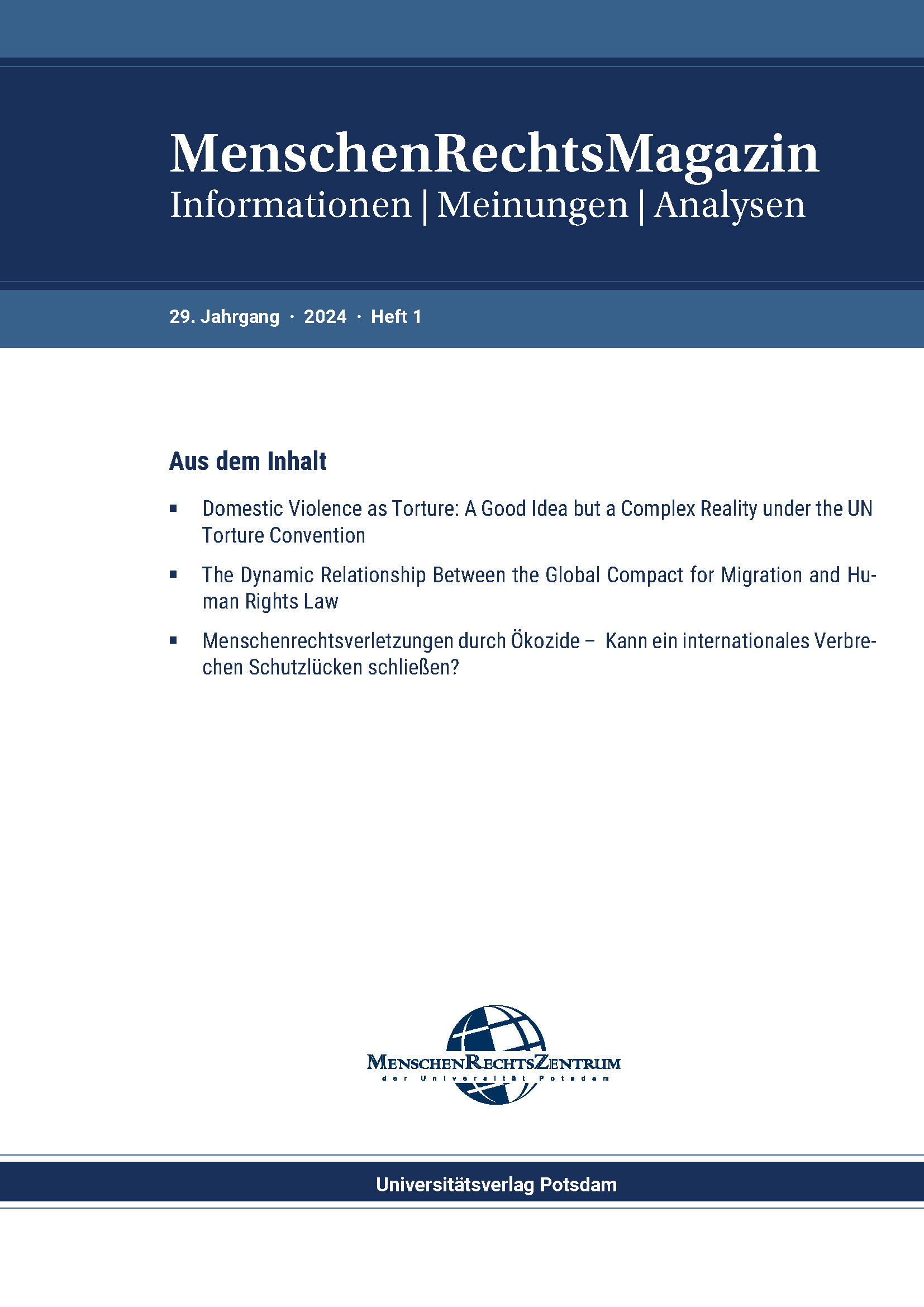The dynamic relationship between the Global Compact for Migration and Human Rights Law
DOI:
https://doi.org/10.60935/mrm2024.29.1.2Keywords:
Global Compact for Migration, human rights law, human rights treaties, migration, international migration law, United Nations, international soft law, International Migration Review ForumAbstract
Is the Global Compact for Safe, Orderly and Regular Migration (GCM or “the Compact”) essentially a human rights instrument that complements and strengthens existing obligations under international law, as some people argue? Or does it entail the risk that States use it as an excuse to bypass obligations following from human rights treaties, and to introduce further requirements for regular migration, in fact bringing more migrants in a situation of irregularity? Contributing to the ongoing debate, this paper explores the dynamic relationship between the GCM and human rights treaties in order to understand the extent to which the GCM has the potential to reinforce and/or to undermine the human rights protection of migrants. The examination adopts two angles: it first assesses the substance of the Compact, i.e., its Objectives, in relation to human rights law, and then examines the GCM as a process, i.e., its institutional and procedural dimension in light of its review mechanisms.
Published
Issue
Section
License
Copyright (c) 2024 Jürgen Bast, Janna Wessels, Anuscheh Farahat

This work is licensed under a Creative Commons Attribution 4.0 International License.


